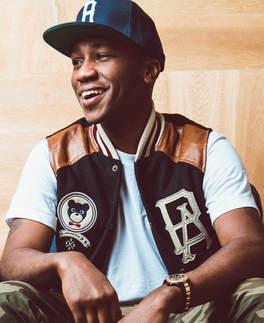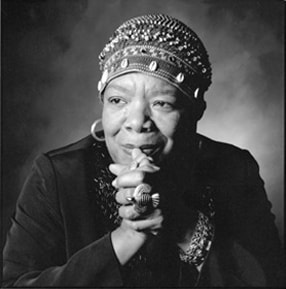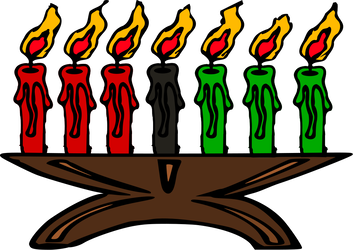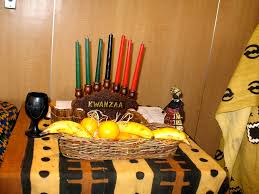|
by Marina Brafa It’s winter time again: the scent of cinnamon wafting through the air, the decorating of gingerbread houses and Christmas movies hitting theaters in a jingle-bell-like staccato. Ready for some nauseatingly kitschy Christmas staples? Or something new? For the fourth and final installment of our Cringe series, we are featuring the documentary The Black Candle. The Black Candle (2008) Are there any true film equivalents of Christmas in other religions? This was the question that was driving me when I was looking into Christmas movies recently. Most of those genre movies focus on the Christian and Western version of the holiday season featuring snow, pine trees, reindeers, a manger and religious songs. I wanted to find out whether there were any similarly important secular or religious holidays that inspired an entire movie genre. The only thing I could come up with was Hanukkah, which was celebrated from December 2 to 10 this year, by Jews all over the world, and upon searching I found some Hanukkah movies (An American Tail, The Hebrew Hammer). I moved deeper into the holiday movie jungle and stumbled over the trailer to the 2008 documentary called The Black Candle, a self-labeled “first feature film on Kwanzaa.” I had never heard this word before and I had to know: What is Kwanzaa?  36-year-old director M.K. Asante teaches English and Film at Morgan State University (photo: throwacoup) 36-year-old director M.K. Asante teaches English and Film at Morgan State University (photo: throwacoup) For those of you unfamiliar with Kwanzaa, here are the basics: it is a 7-day secular celebration observed from December 26 to January 1. So date-wise it covers the Christian Christmas time and New Years, but its roots are very different. It is less a religious than a political and cultural holiday. And thanks to the documentary The Black Candle, which is available on Youtube, Vimeo I learned so much more about Kwanzaa. The Black Candle was made by M.K. Asante, a Zimbabwe-born American author, hip hop artist, professor and filmmaker whose autobiographical novel Buck gained him praise and attention in literary circles and beyond. His documentary uses, as Asante states in an interview with NPR, “Kwanzaa as a vehicle to celebrate the African-American experience.” It shows how and why Kwanzaa emerged, what it is about and where it is headed. Asante does this by documenting the holiday celebrations in pictures and sound. This provides an informative starting point to get to know Kwanzaa. Kwanzaa started as a Black holiday which means it came out of and is celebrated by Black communities, especially in the U.S. It was literally invented by Maluana Karenga as a response to the search of the Black Movement in the 1960s for a genuine Black holiday which would celebrate Black culture and reconnect Black communities to their African roots. Hence, Kwanzaa was a politically and culturally motivated invention that was to provide an anchor for the African heritage that Black communities in the 1960s felt the urge to appreciate, and it was to help form an identity for POC in the U.S. Every community has some kind of Christmas, so why not the Black community as well?
 Famous American poet and activist Maya Angelou is the narrator of the documentary (photo: Adria Richards) Famous American poet and activist Maya Angelou is the narrator of the documentary (photo: Adria Richards) The rituals of celebrating Kwanzaa - food, music, dance, readings - draw on a mix of what the founders defined as African and Afro-American traditions. There is also a candle holder called a Kinara with seven candles (sidenote #2: an idea borrowed from Judaism with its menorah?), one lit each day of Kwanzaa for the seven principles. It begins with a black candle in the middle, which symbolizes the African people. Then comes three red candles representing the struggles they have faced and finally three green candles for their future. The documentary merges archival footage with interviews and scenes at families’ homes in the U.S. and mostly African countries shot by M.K. Asante. Among the interviewees, we find famous artists/activists like rapper Chuck D, the founder of Kwanzaa Maulana Karenga and former NFL star player Jim Brown, as well as researchers, Black Movement activists and everyday people from the streets. For the film’s narration, M.K. Asante teamed up with poet/activist and “Hollywood’s first female black director” Maya Angelou, an icon of Afro-American literature and culture. Hence, the formal aspects of the film, the montage of its footage and choice of protagonists, clearly underline its afro-centric focus tracing lines from the U.S. and African countries back and forth. Of course, this review is by no means comprehensive. There is much more to know about the context of Kwanzaa’s emergence in the 1960s, about the influence it had back then and it has now. I personally would be interested in learning more about its importance in the U.S., and even more in other (African) countries, and finding out who exactly celebrates Kwanzaa nowadays. Also, I find it remarkable that the film is available on three main online video platforms for free. Therefore, I would appreciate a critical approach (in film, book, or other) towards Kwanzaa’s concepts, e.g. of “Africa,” and the figures behind its invention, which the movie is lacking. Which Black communities do not celebrate it and why? Is it still “just” for POC or can other ethnic groups participate in it as well? What’s the relation between other (religious) traditions and beliefs and Kwanzaa (since it seems to borrow symbols from them)?
Informative reads Information in German by the Bundeszentrale für politische Bildung. Critical article by the Center of Pan African Thought: The Case for Kwanzaa. A Pan African attempt to guide us back to ancient African roots. By Vistra Greenaway-Harvey, published on December 23, 2016. Mayes, Keith A.: Kwanzaa. Black Power and the Making of the African-American Holiday Tradition. New York 2009: Routledge. Find a review of the Maye’s book here (in German). Elizabeth Pleck: Kwanzaa: The Making of a Black Nationalist Tradition, 1966-1990. In: Journal of American Ethnic History. Vol. 20, No. 4 (Summer, 2001), pp. 3-28. The self-labeled “Official Kwanzaa Website” run by the founder’s organization “Us”.
0 Comments
Leave a Reply. |



 RSS Feed
RSS Feed
